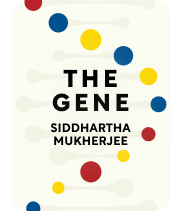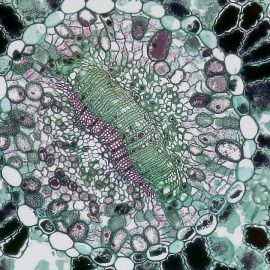

This article is an excerpt from the Shortform book guide to "The Gene" by Siddhartha Mukherjee. Shortform has the world's best summaries and analyses of books you should be reading.
Like this article? Sign up for a free trial here.
How did Darwin’s theory affect science and society? How did Darwin’s ideas shape our understanding of evolution and genetics?
Charles Darwin’s natural selection theory paved the way for many subsequent theories and discoveries that make up the bedrock of our current understanding of human evolution. However, while Darwin accurately explained the results of evolution, he wasn’t able to figure out how it worked.
Here’s how Darwin’s ideas shaped our understanding of genetics.
Darwin’s Theory of Evolution
Mukherjee begins the story of genetics in 1859, when Charles Darwin published his theory of evolution, titled On the Origin of Species by Means of Natural Selection. Charles Darwin developed his theory by studying finches in the Galapagos Islands, where he found that birds on different islands had distinctly different beak shapes—for example, one beak type was well suited for cracking open nuts, while another was effective at digging insects out of tree bark.
Darwin concluded that each type of finch had evolved to thrive in its particular environment. This happened because traits that help organisms survive and reproduce tend to get passed on to the next generation, while less suitable traits tend to get outcompeted and die out. In this case, because the conditions on each island were slightly different, over time those traits diverged and created noticeably different types of finches.
| Pre-Darwinian Theories of Species Before Charles Darwin’s natural selection theory, other prominent biologists put forward their own theories about how and why different species appeared. A couple of notable theories were: Creationism—The belief that God designed the Earth and everything that would ever live on it. Creationists believe that God created the Earth around 6,000 years ago, along with complex organisms to inhabit it. This theory also states that all species (including humans) were created in their current forms and will keep those forms for as long as the species exists. Catastrophism—Catastrophism states that large-scale natural disasters must have occurred periodically throughout history, suddenly wiping out some species and allowing new species to take their places. However, while that has happened—for instance, the meteor that killed the dinosaurs—we now know that it’s not the main reason why some species go extinct and new species emerge. |
However, Mukherjee tells us that while Darwin accurately explained the results of evolution, he wasn’t able to figure out how it worked. Darwin (incorrectly) proposed small “particles” of inheritance produced by cells and carried in the blood, which he called gemmules.
Darwin theorized that streams of these particles from each parent would mingle in their offspring, thereby blending the parents’ traits. He called this theory pangenesis (meaning “originating from everything”) to illustrate that any given gemmule could come from anywhere in the body.
He also believed that, because any cell could produce gemmules, those gemmules would carry information about changes that cell had undergone—for instance, injuries, or muscles made stronger through a lifetime of exercise. In other words, pangenesis theory relied in part on the inheritance of acquired characteristics, rather than purely genetic ones.
(Shortform note: Some modern scientists think pangenesis theory may be more accurate than previously thought. Some studies have shown that certain experiences—especially traumatic ones—leave genetic markers that can be passed on to offspring. For example, an animal might instinctively be afraid of the scent of a predator, even if it’s never smelled that predator before and therefore shouldn’t know what it is. Furthermore, some scientists report finding free-floating genetic material in the blood, which would be a perfect match for Darwin’s gemmules. However, this theory is still controversial and unpopular in the scientific community.)

———End of Preview———
Like what you just read? Read the rest of the world's best book summary and analysis of Siddhartha Mukherjee's "The Gene" at Shortform.
Here's what you'll find in our full The Gene summary:
- What genes are and how they work, explained in simple terms
- The history of gene discovery, dating back to the 1800s
- What the future of genetic engineering looks like






